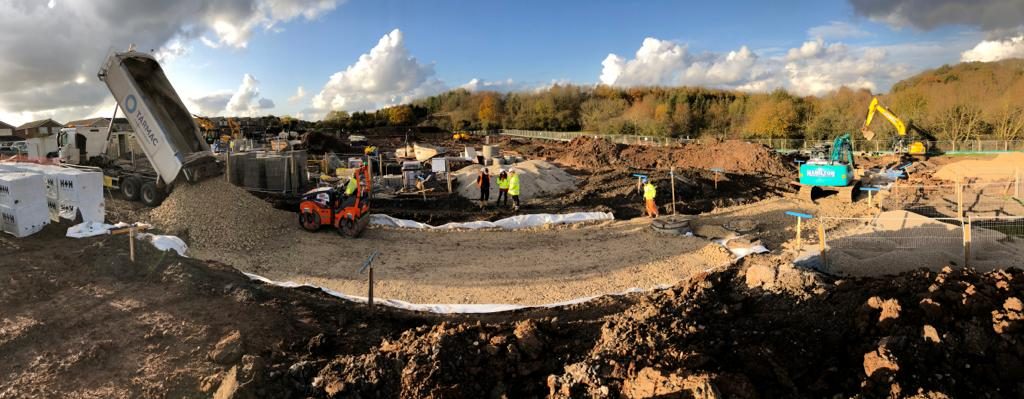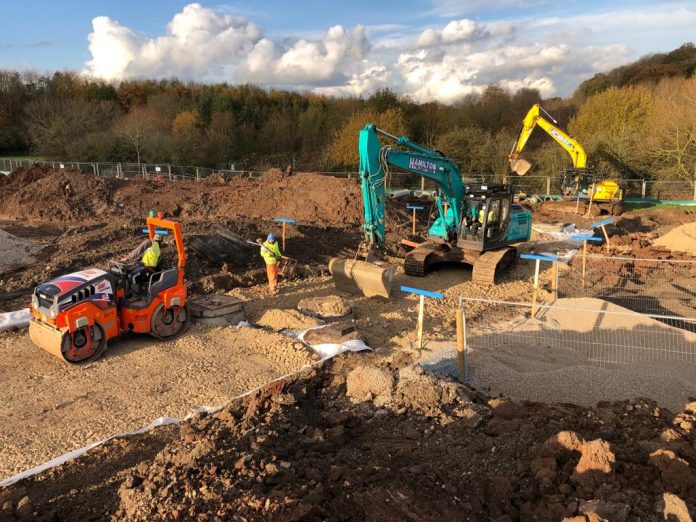What can housebuilders do to recoup time and money from stalled construction sites? Craig Andrews of Wrekin Products discusses a proven technique to improve site efficiency through value engineering that many in the industry are not taking advantage of
As newly reopened construction sites continue to gather momentum across the UK, housing developers and contractors will be looking for intelligent ways to recoup time and money after months of closure due to the coronavirus pandemic.
While government guidelines in England advised that housing developments could remain open if the required social distancing measures and health and safety precautions were followed, initially many opted to exercise caution. With most now feeling confident that risks are reduced and the required health and safety standards can be met, construction sites are reopening.
Despite this good news, there is now the problem of time and money being lost and how to regain ground without heightened costs. This is where value-engineered geogrid solutions, which adopt an underutilised range of products, can really make their mark, and perhaps finally gain the industry recognition they deserve.
Universal challenges faced by housebuilders
In our estimation, there are eight key needs that the housebuilding industry consistently works to meet – and, with the impact of coronavirus, are arguably looking to address even more urgently.
There is the primary requirement to create and maintain a safer environment, on site and across the network, reducing the impact of the construction site itself and on the surrounding network, creating a more positive relationship with the public as a result.
Any new network needs to be fit for purpose; constructed to a good condition but remaining effective throughout its whole life. There is a general drive towards less roadworks and therefore improved road user satisfaction, with a desire to reduce haulage and traffic management to maintain a smooth flow of traffic.
There is a global need for better environmental outcomes, including the efficient use of plant, labour, and material resources. This is something that the housing sector continues to strive for but is often unable to implement to great effect, due to national (strategic road network) restricted design standards being applied to the design of local road network projects.
Finally, there is the need to deal with site variations, which includes coping with evolving design briefs due to site-specific ground conditions, while striving to achieve cost effectiveness, as well as improving productivity through time efficiencies.
How can solutions be applied to solve these industry-wide problems?
Using geogrids in value engineered solutions can have a very positive impact on these requirements, through eight broadly defined applications, which can address eight related problems, helping to make sites much more time-, cost- and carbon-effective.
Applications include the creation of temporary compounds for accommodation, parking and storage, working platforms for the safe use of heavy-duty tracked plant and haul roads for construction traffic. There are permanent roads for public authority adoption or private use – plus associated parking areas and recreational facilities. Geogrid-derived solutions are also very valuable in the engineering of soil slopes, environmental bunds and retaining walls.
Through the intelligent adoption of geogrid solutions, common problems associated with these applications can all be resolved. The costs of aggregates and earthworks in each application can be reduced. There is scope to increase the short-term load-bearing capacity without increasing the thickness cross-section. The long-term in-service capacity (structural life) of pavements can also be increased, again without increasing the thickness of a pavement.
Geogrid solutions can maintain performance when designs need to be evolved, due to much weaker soils found at the time of construction. The solutions can allow the use of marginal or recycled soils and aggregates, which can be a biproduct of brownfield regeneration. Where brownfield sites are developed, geogrid-based solutions can mitigate differential stiffness and/or settlement, cap very weak deposits or span voids to mitigate risk due of potential collapse in the underlying soils.

Case study: Creating a fit-for-purpose adoptable road on a new housing development
The team at Wrekin Products recently value-engineered a road with geogrids in support of the Derby City Council highways client, the developer William Davis Homes, and the contractor S&I Groundworks, with the creation of an adoptable road for a new housing development called Bunkers Wood.
The city council’s overseeing engineer highlighted that various issues surrounding the creation of a permanent adoptable road needed to be resolved before the adoption progress could be progressed. A geogrid solution to significantly reduce the road foundation thickness was viable, but needed to be proven through a performance trial due to the very weak subgrade and the potential for differential movement.
The national design document CD225 (formerly IAN 73/06 Rev.1 (2009) and HD 25/94) permits the use of a performance-based design approach “that gives flexibility to the designer in terms of the materials that can be used in the foundation, in conjunction with the top of foundation testing to confirm performance requirements have been met”.
After Wrekin Products provided the authority with sufficient supporting historical and analytical evidence, along with a design section, a performance trial area was implemented at Bunkers Wood. A 20m-long on-line area was cleared down to the sub-formation with an additional 10m at either end to allow for access and egress.
An initial layer of MultiTrack MT1000 geotextile membrane provided separation of fines and filtration of water flow, which could have otherwise weakened the foundation over time. While the geotextile membrane provides effective separation and filtration, the subsequent geogrid layer(s) provide efficient stabilisation through robust reinforcement of the 6F5 aggregate (capping materials). Without either one of these four functions, the solution would not perform during the construction phase and/or its whole life in-service.
The first layer of Wrekin’s E’GRID 40/40 (punched and drawn biaxial geogrid) was rolled out over the top of the MT1000. 250mm of 6F5 aggregate was placed and then compacted by a roller, followed by another layer of geogrid and further 250mm of 6F5. Due to the soft subgrade, a conventional founding section for this type of pavement would have been over a metre thick. Thanks to the recommended geogrid solution, a half metre thick solution was adopted.
This substantial reduction in foundation thickness reduced the total excavation and export of earthworks and reduced the overall import and compaction of aggregates.
After construction of the founding layers, plate bearing tests were required to confirm the in-situ performance at the formation level, on top of geogrid stabilised capping layers. Five plate bearing tests were taken on the inner 20m of the performance trial area, with the highest result being 47% and the lowest result being 18.7%. The performance trial area therefore exceeded the preliminary requirement of 15% at formation level.
A further granular sub-base layer was installed and tested, producing CBRs between 70% and 100%, which far exceeded the requirement of the pavement foundation. This confirmed that the geogrid solution and application was suitable for adoption to overcome the identified problems. Alternative testing methods would have also proven that the value engineered section far exceeded the required performance for a Class 2 Foundation, as outlined by CD225: Design for New Pavement Foundations.
Success on this project was not only due to the value engineering geogrid solution; the entire supply chain worked collaboratively to prepare the site and carry out the works in a safe and efficient manner.
The government’s own Construction 2025 strategy document includes the vision of a 33% cost reduction, 50% faster delivery and 50% reduction in carbon emissions, driving growth across the entire economy. In this case, a 50% thickness reduction substantially reduced the impact on cost and the environment, but most importantly accelerated the construction process, so recouping time and money without impacting on design life.
Ultimately, geogrid solutions are an effective way of supporting the housing sector in addressing its general and site-specific needs, through applications that solve site defined problems. Wrekin offers the best level of service to the whole supply chain, having a positive impact by reducing resources at the design stage, but also during the construction phase and the in-service periods.
Craig Andrews
Engineering manager (UK & Ireland)
Wrekin Products
+44 (0)1543 440440
craig.andrews@wrekinproducts.com














